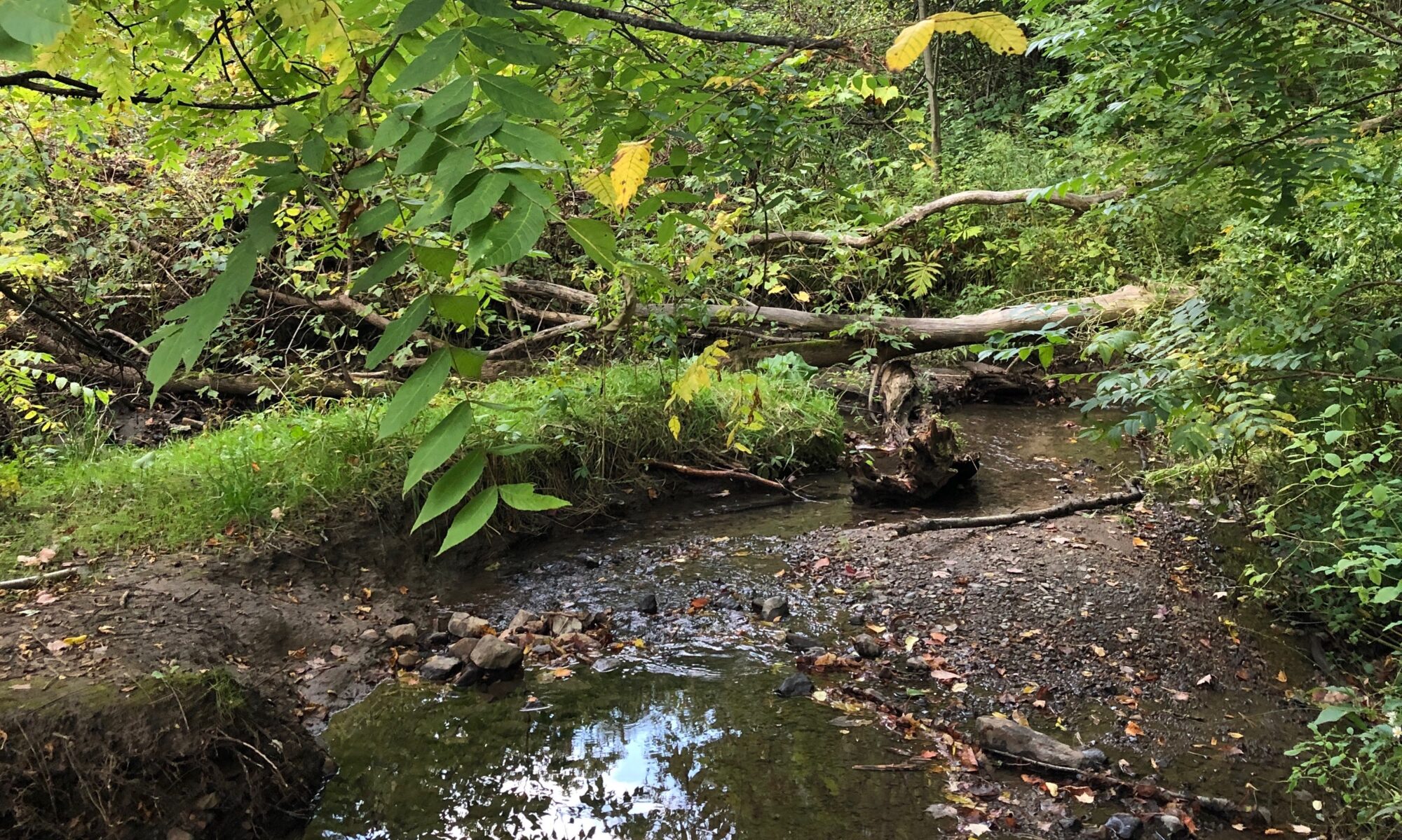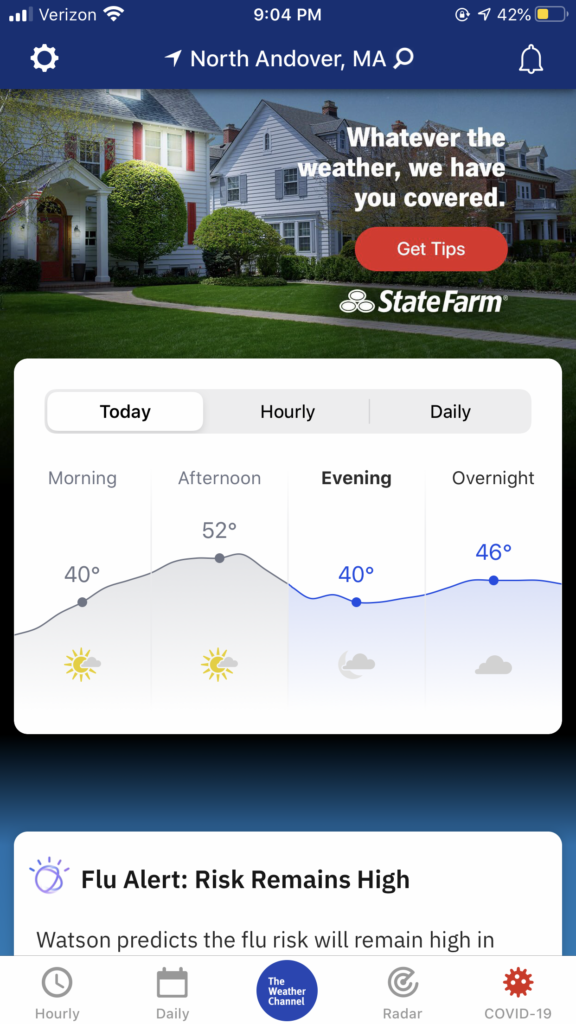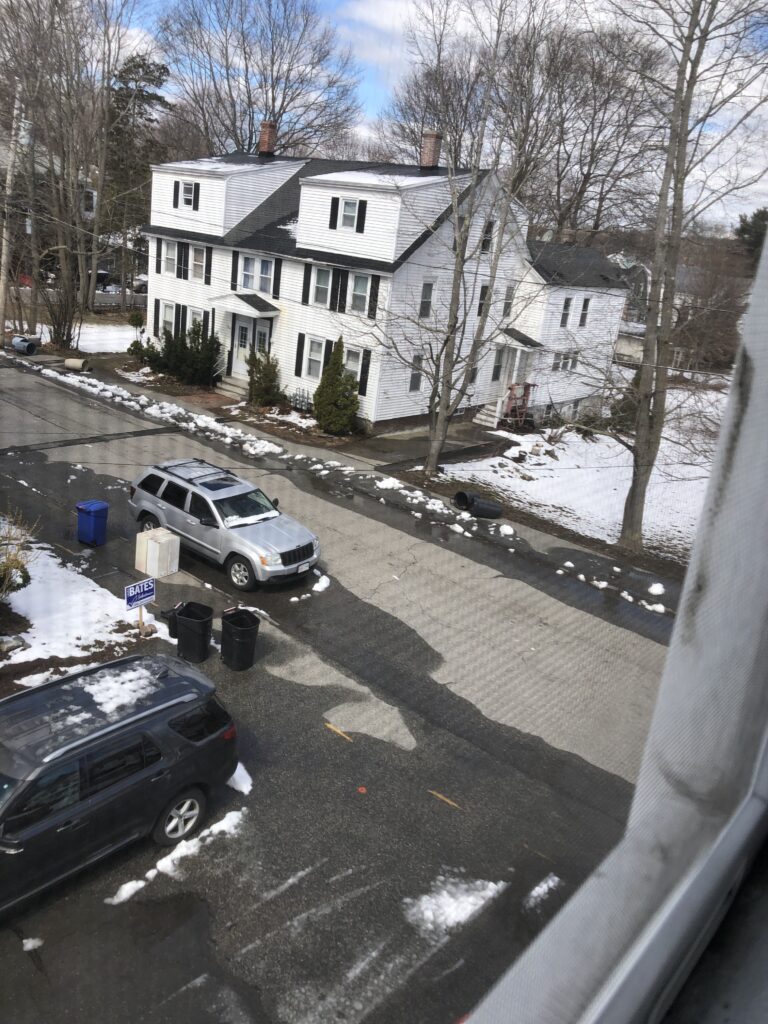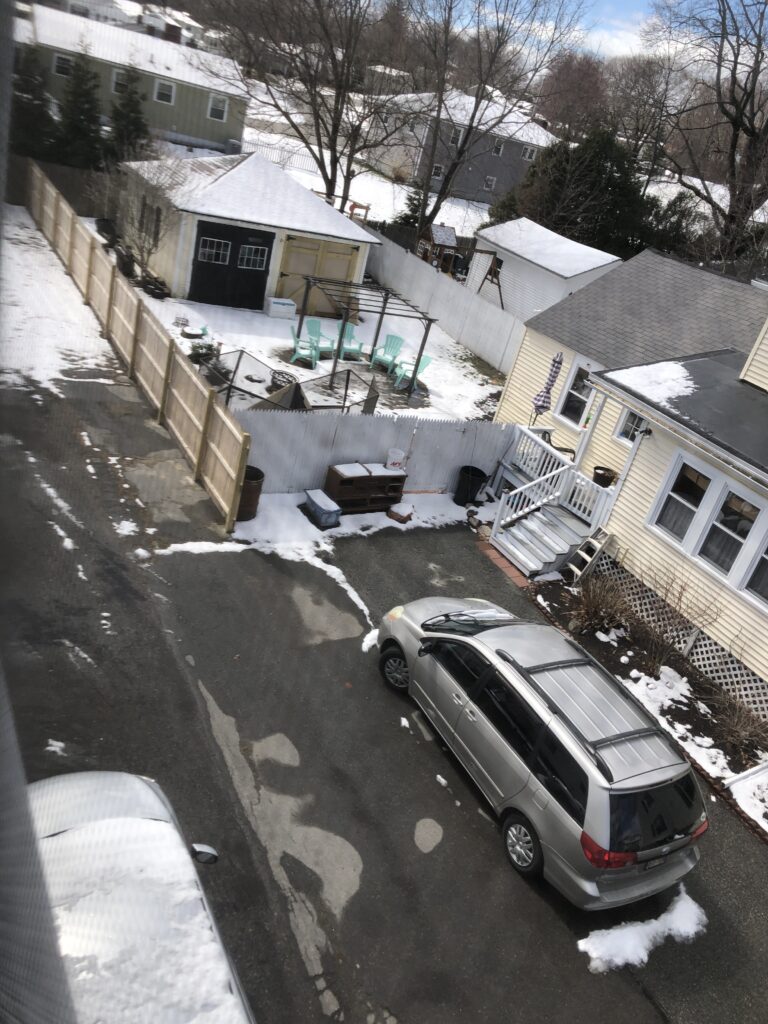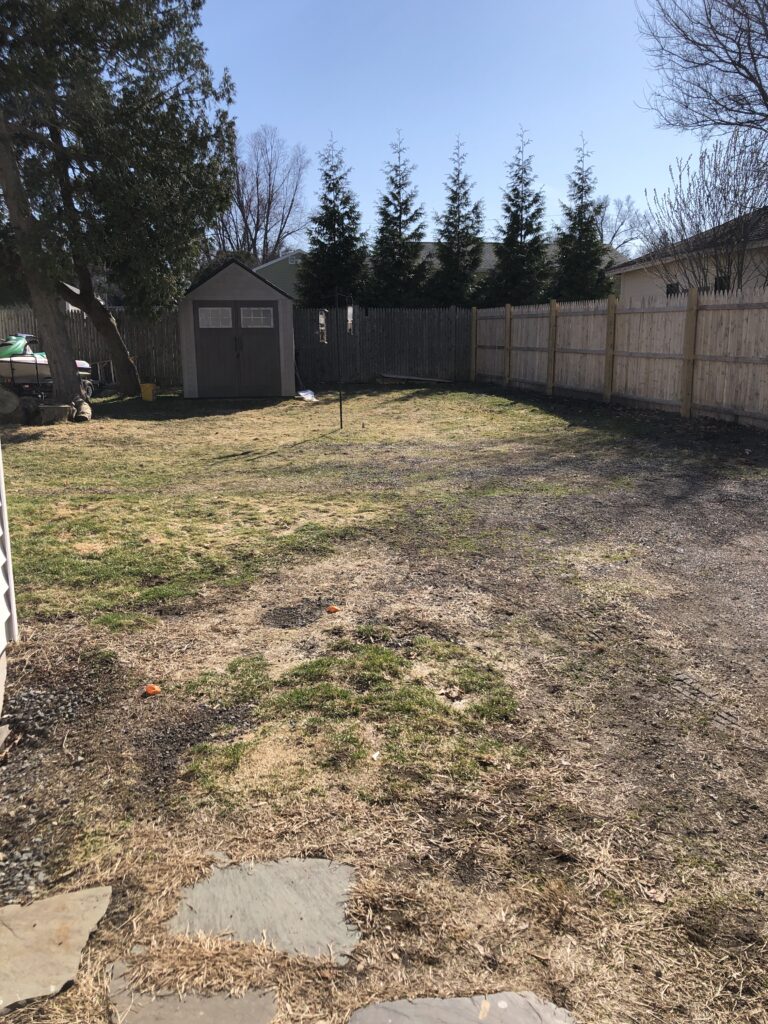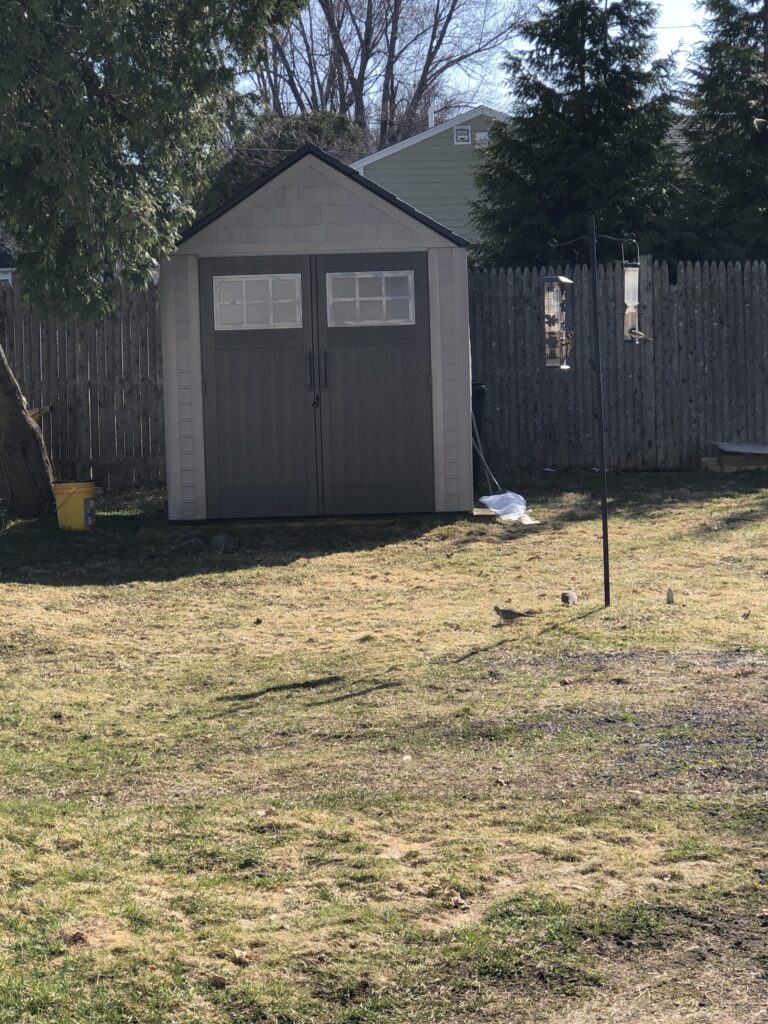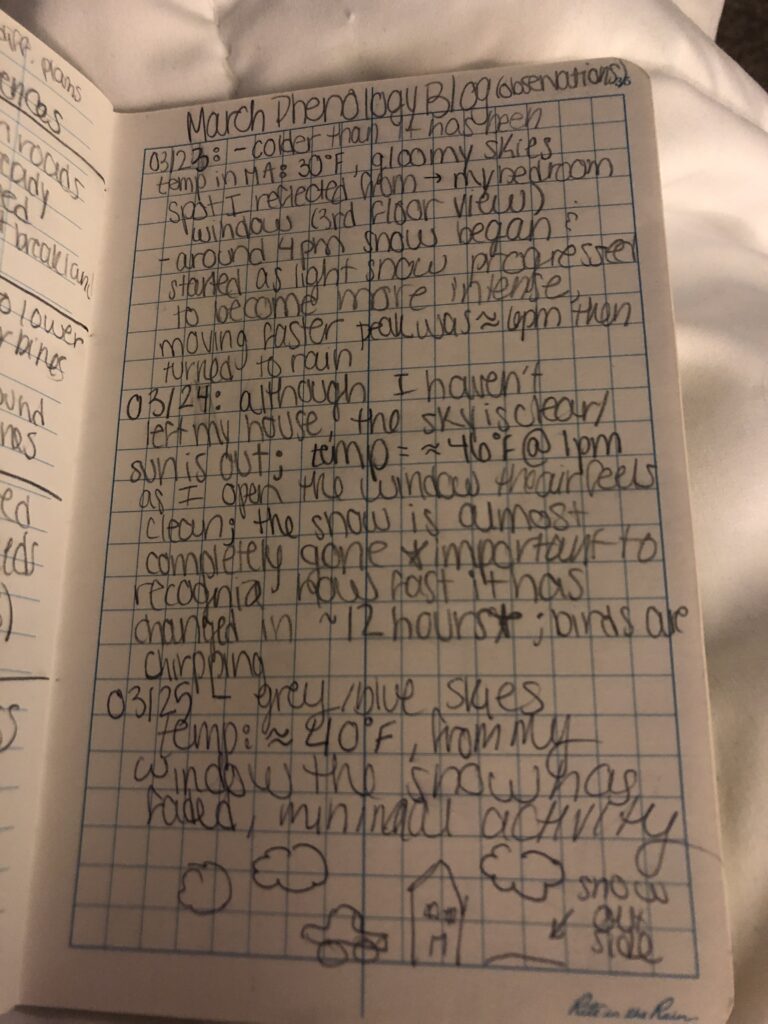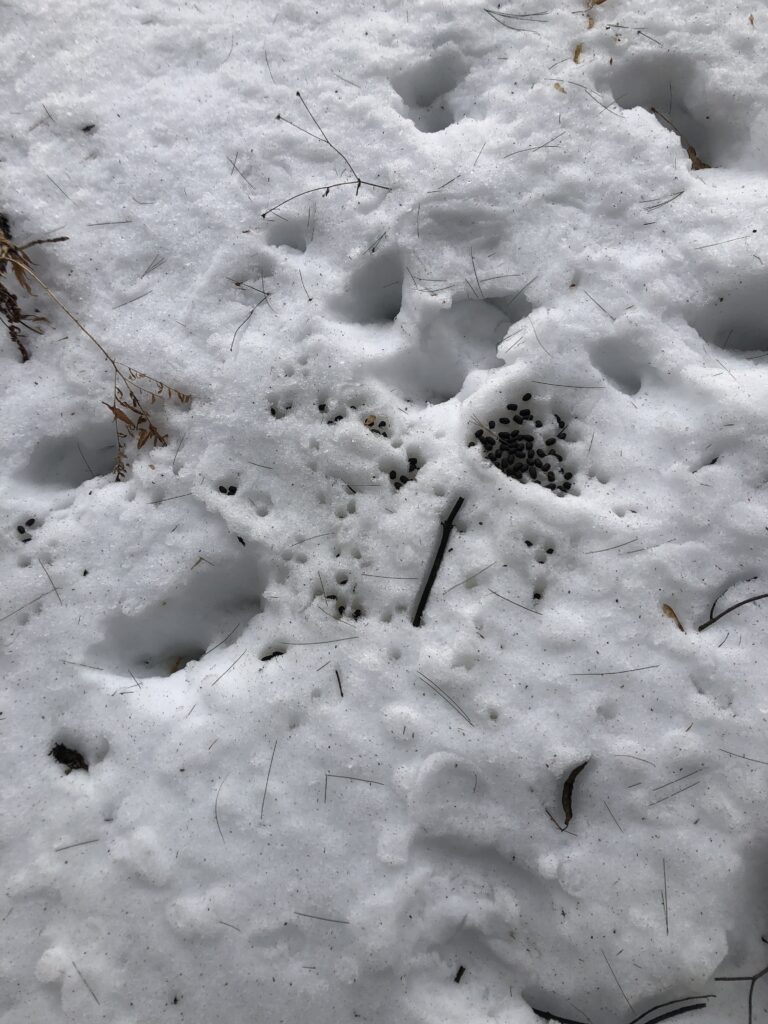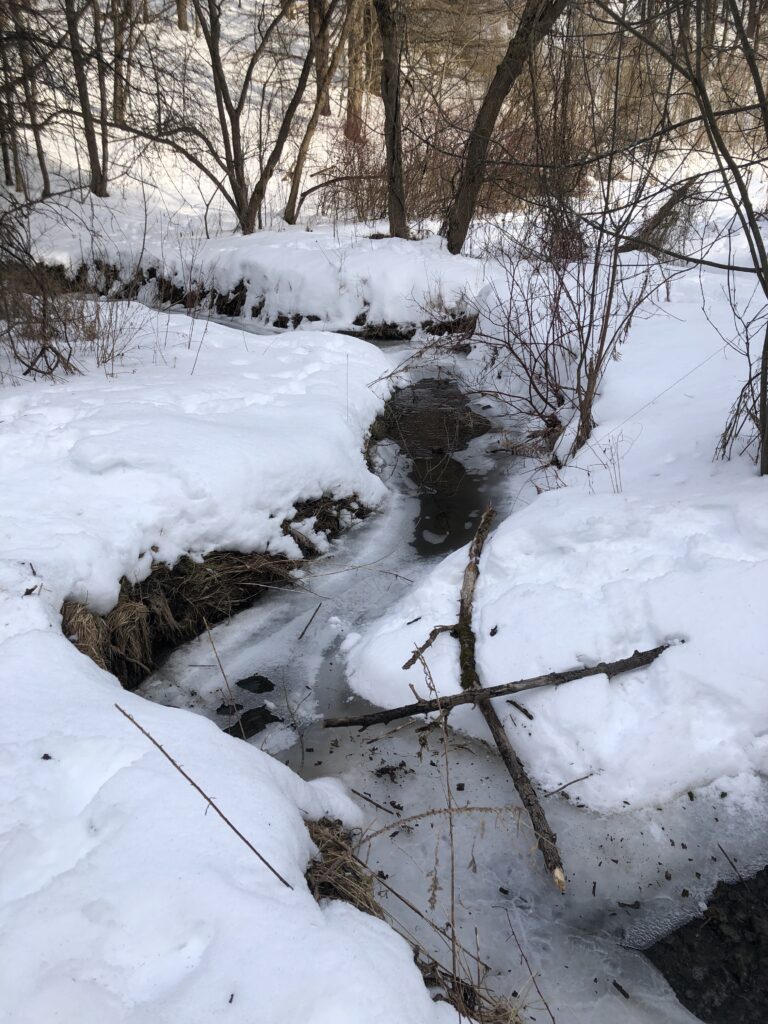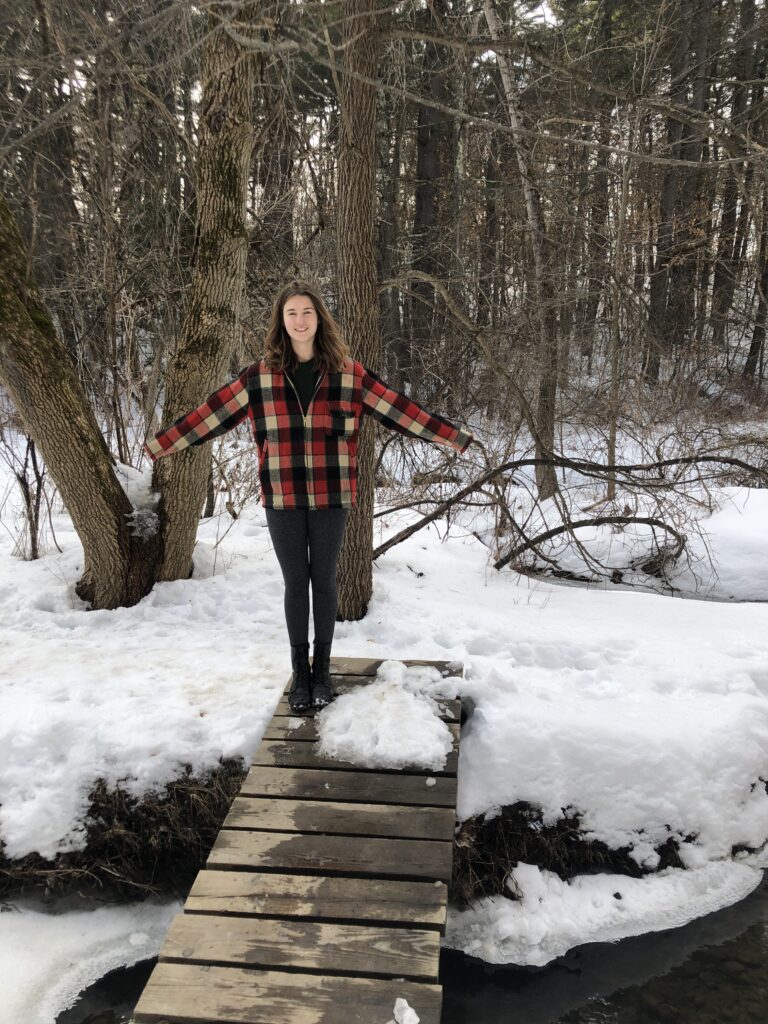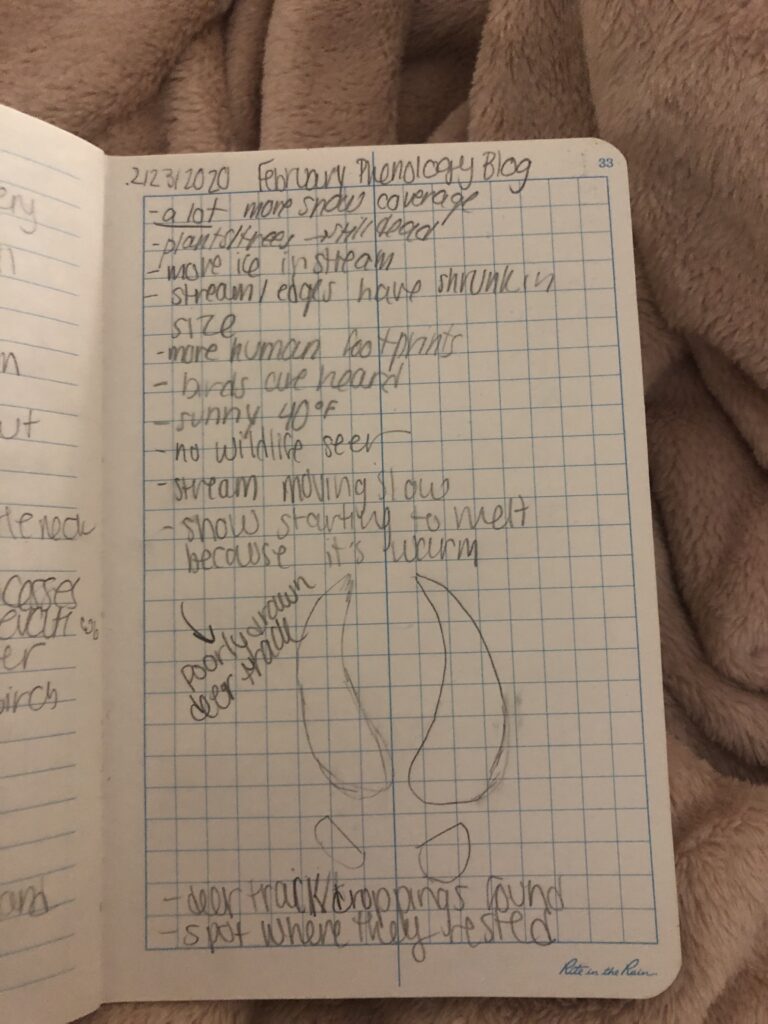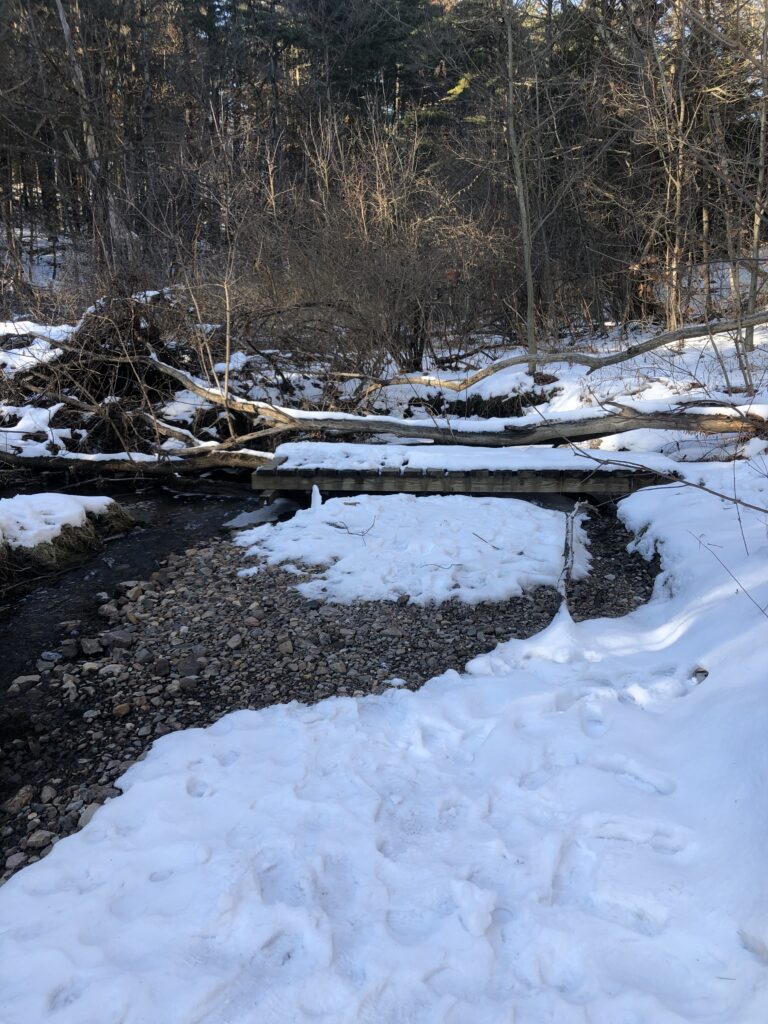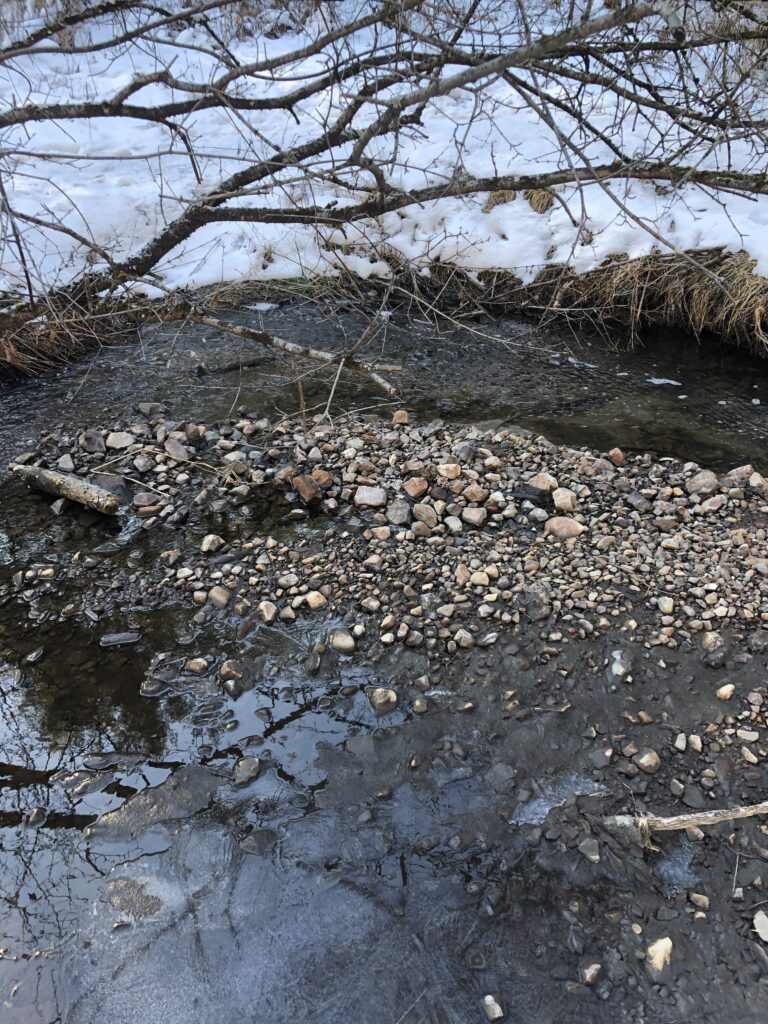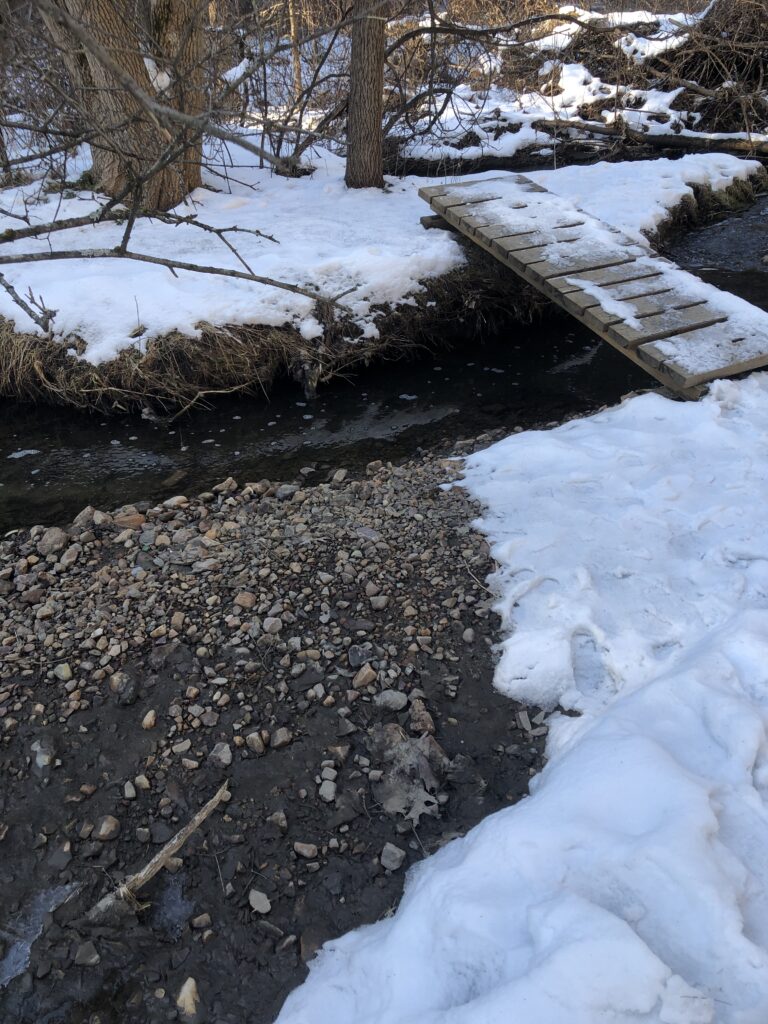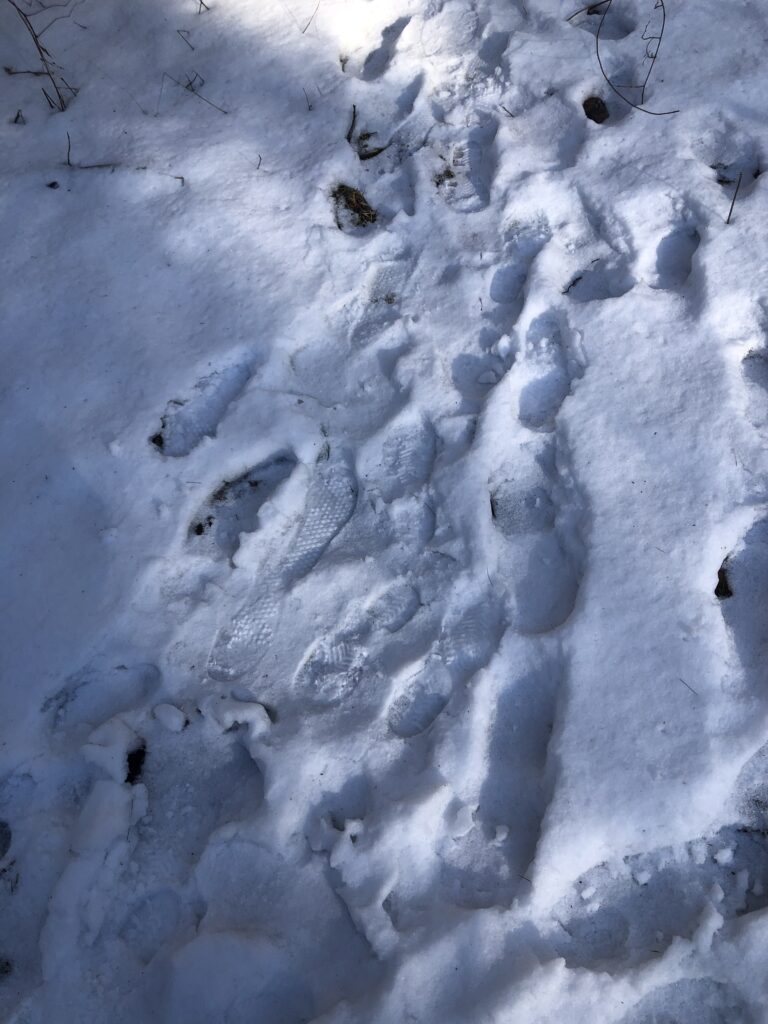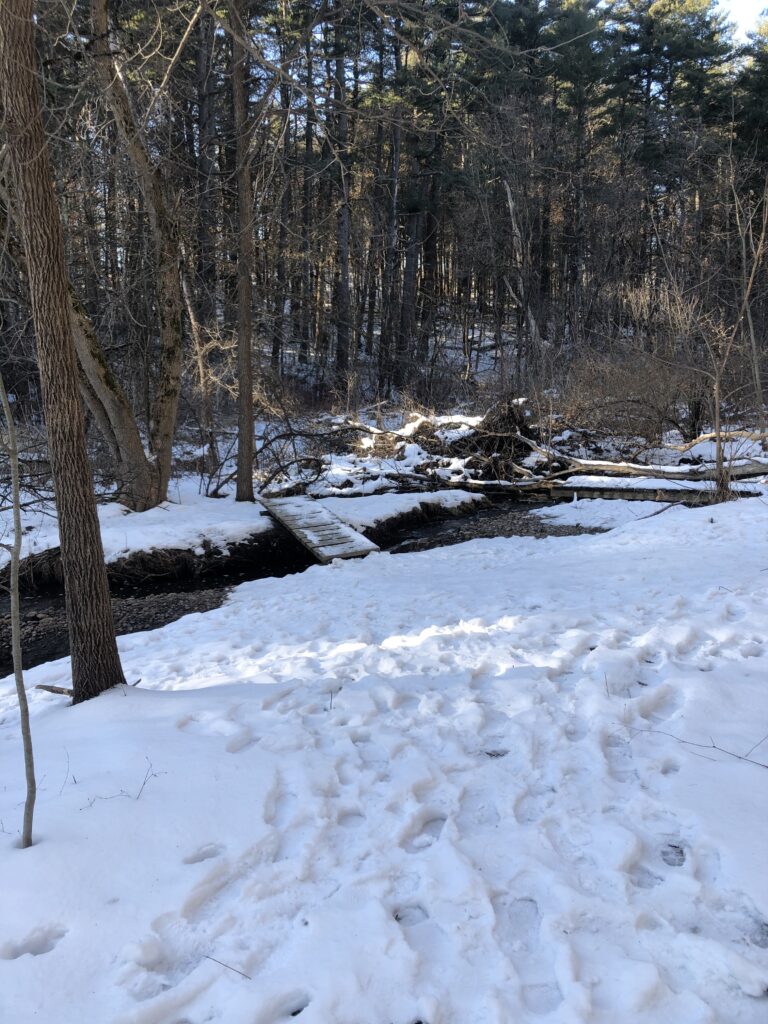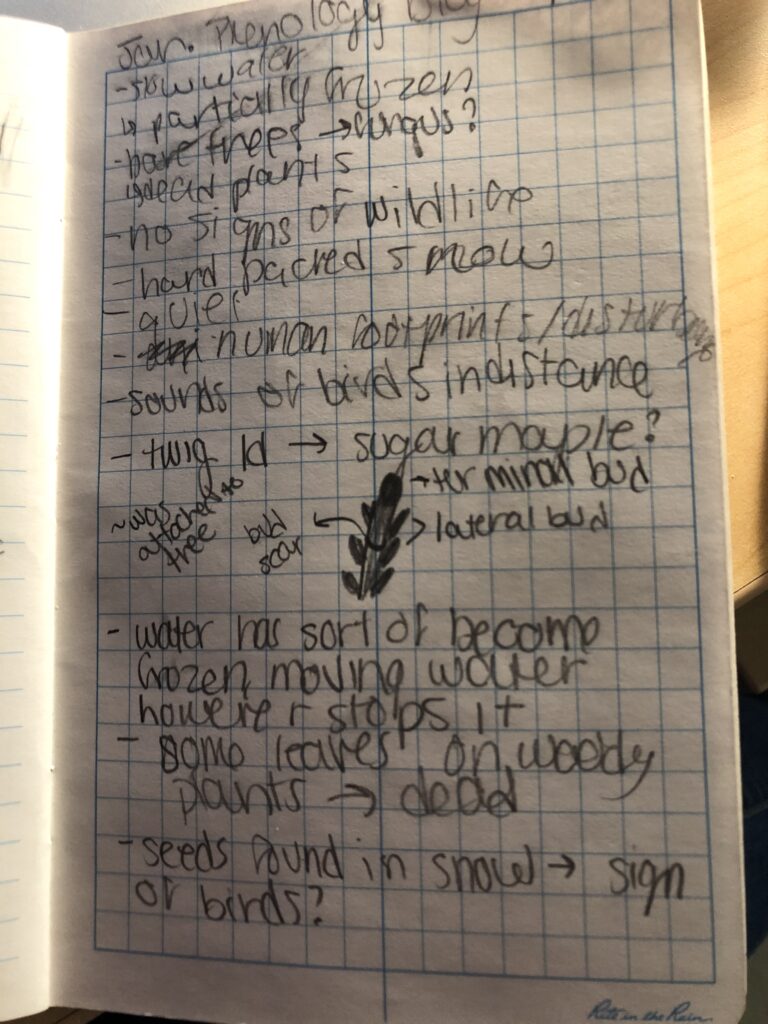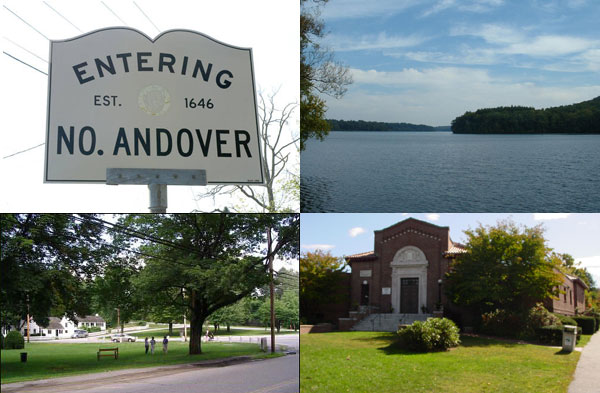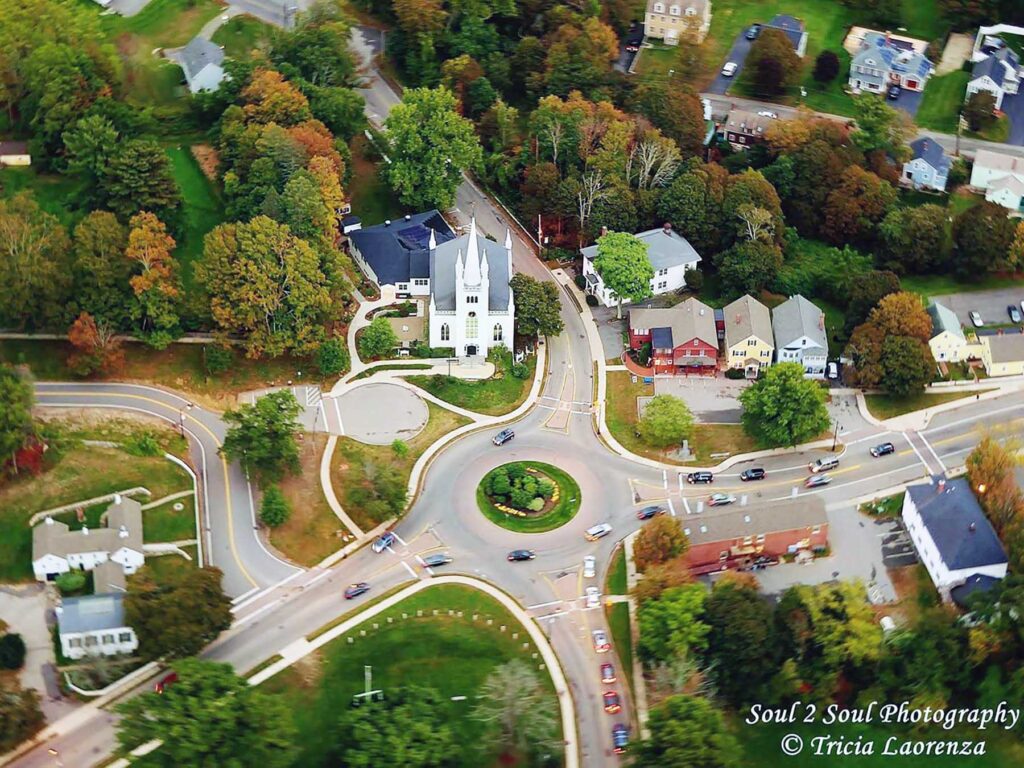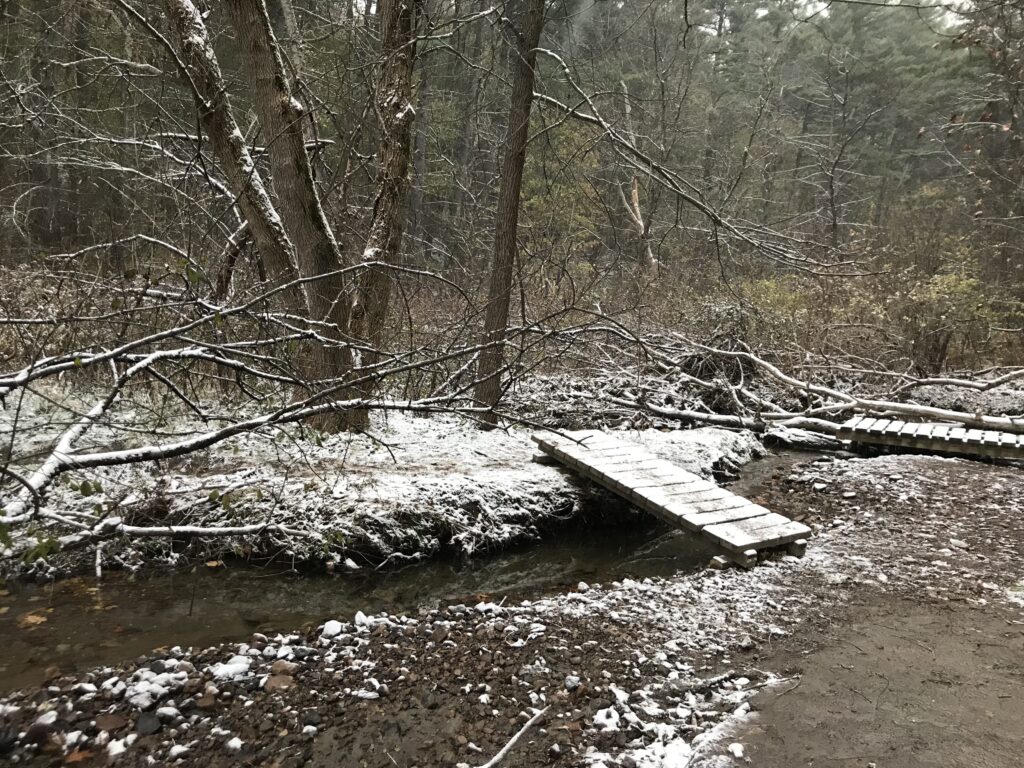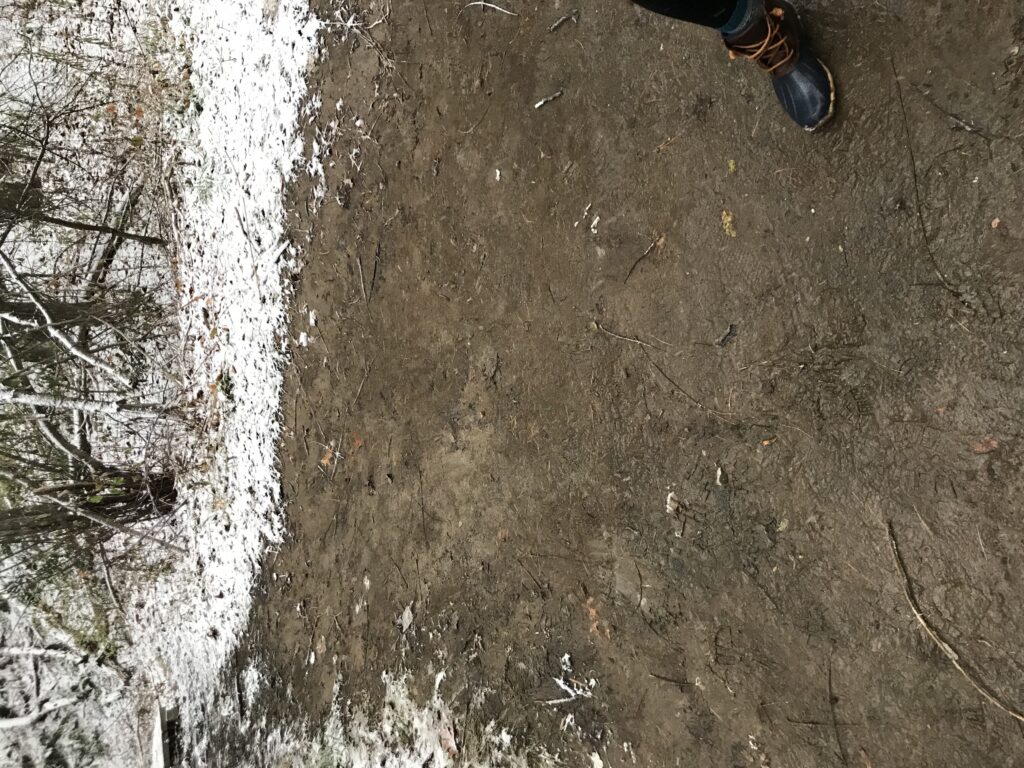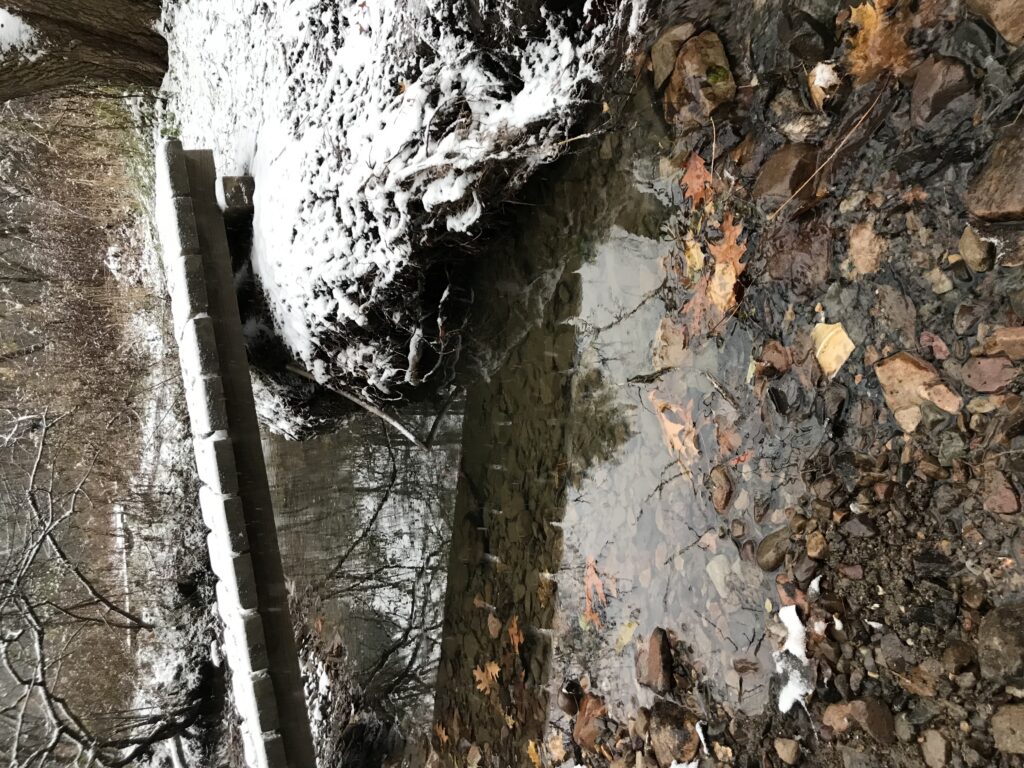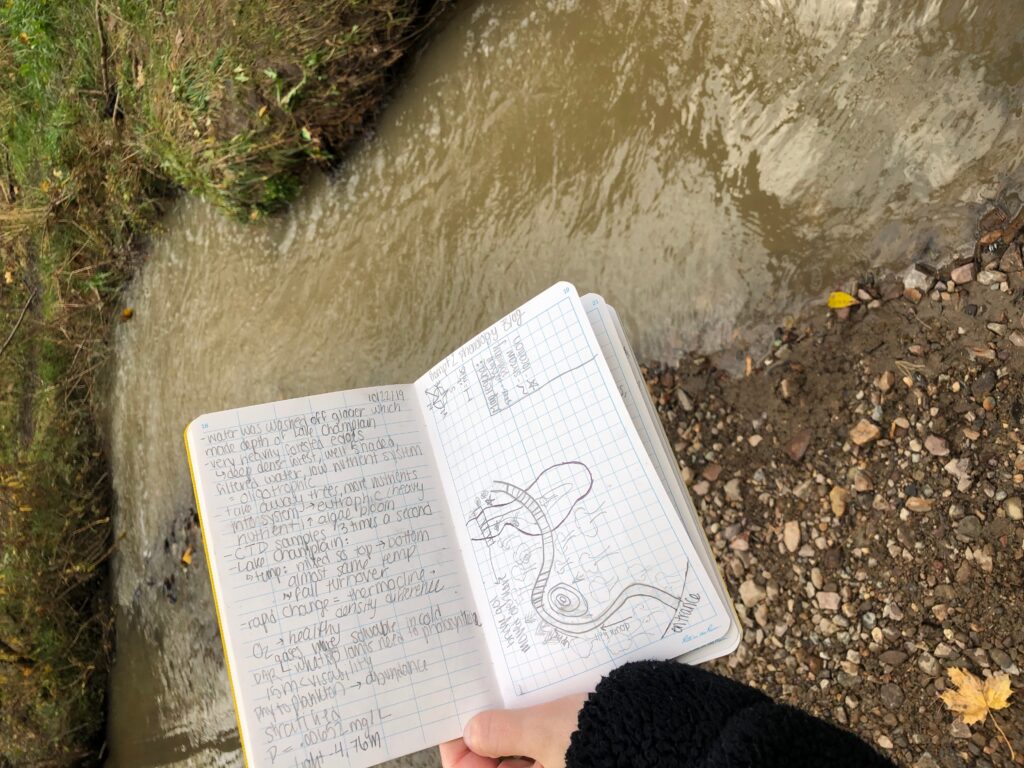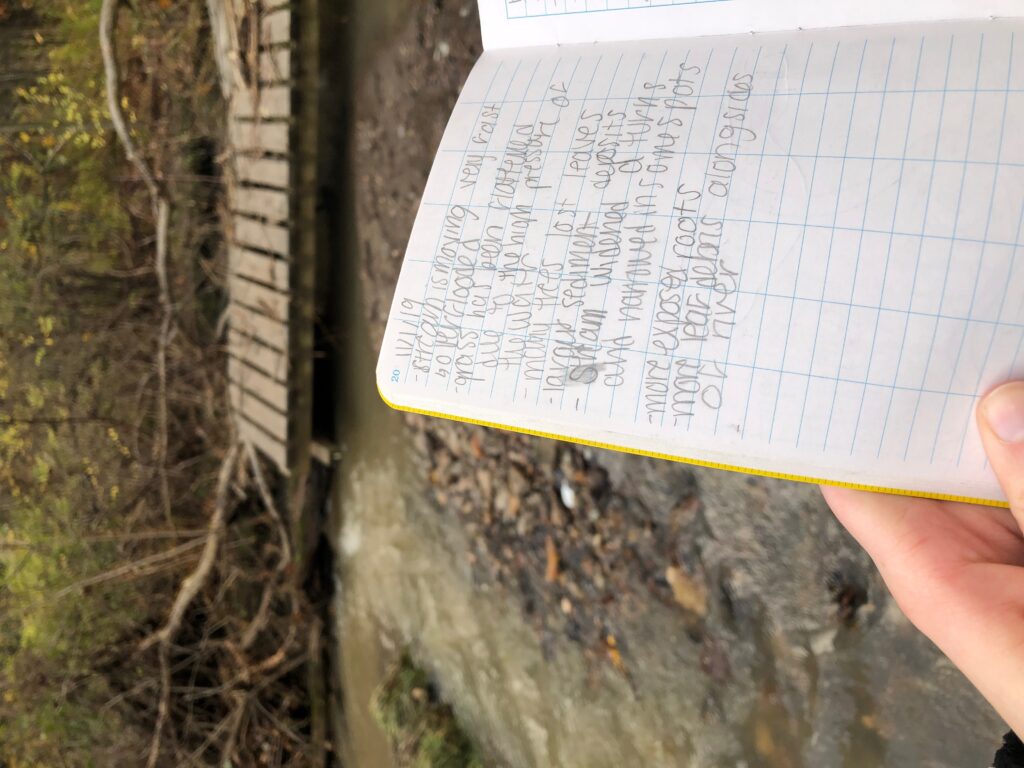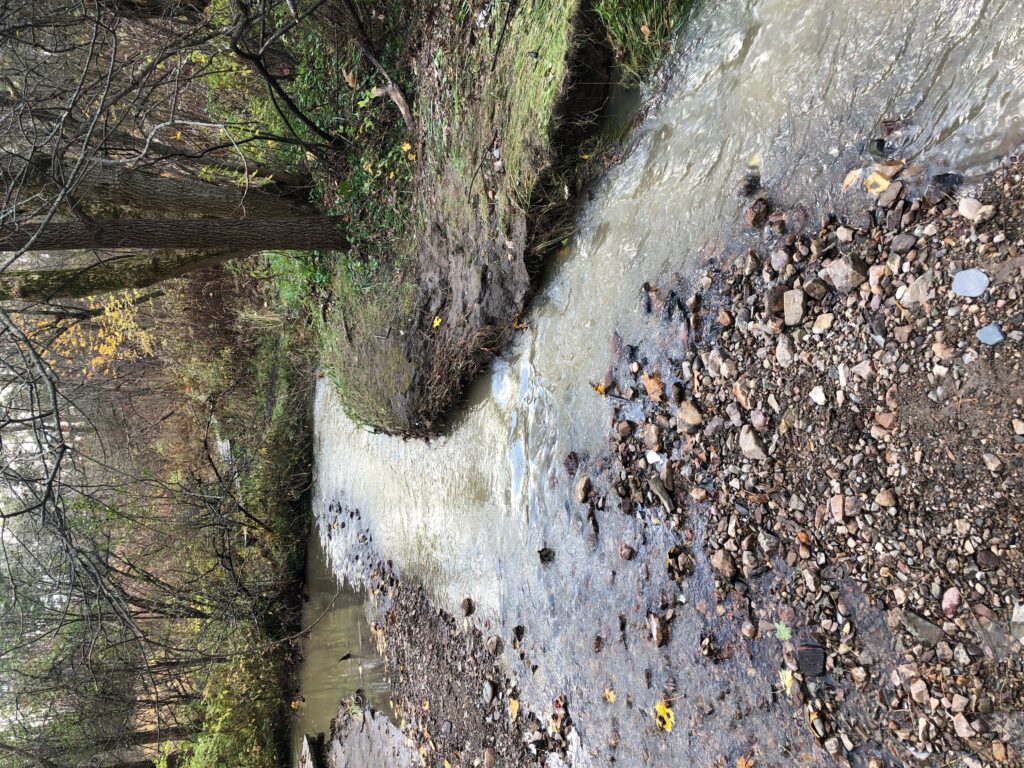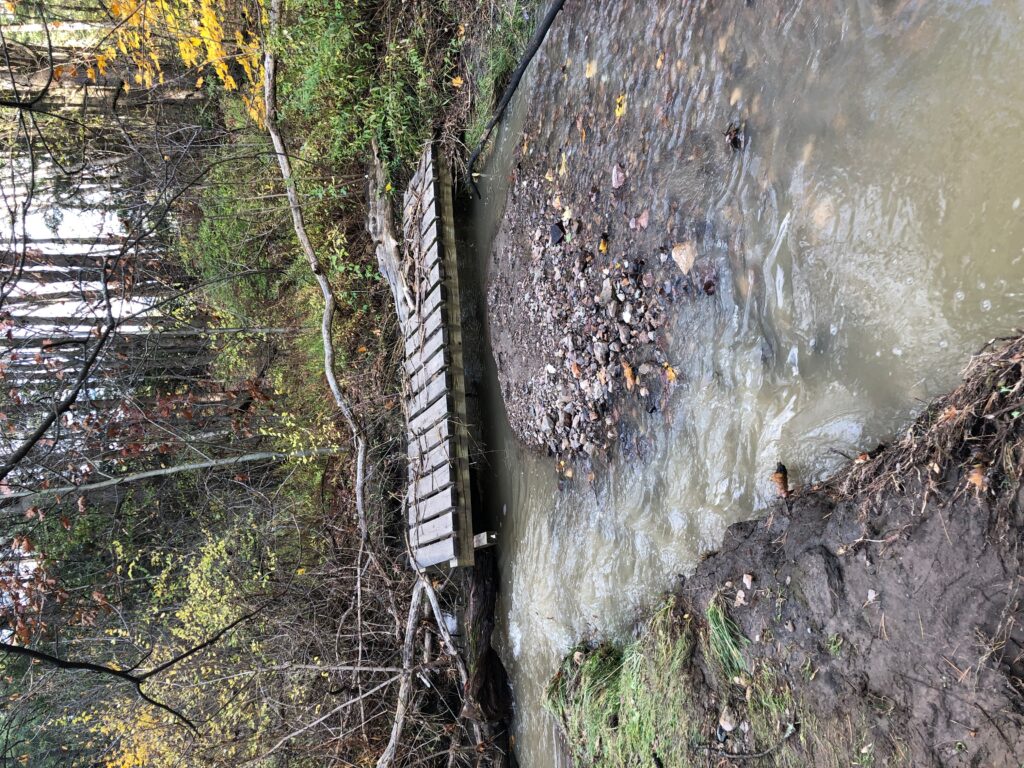Some streams may seem like simple things with not much depth to them. However, when you are able to spend time deeply looking into the surroundings, you are able to learn and see things you have never seen before.
My location is found deeper into the Centennial Woods and can be defined by the moderately fast moving stream going right through the middle. If you are quiet enough, the soft movement of the stream going over the rocks and leaf debris can be heard. You know you are heading towards the right direction when you can hear the stream moving and as you head down the trail small parts of the windy stream can be seen.
At this time of year, the area can be described as colorful and partially barren. On the stream bank, organic material (yellow leaves that have fallen off the large deciduous tree that was towering over the area) filled the ground and parts of the stream. Many of the trees and plants that were directly next to the stream had started to die and lose their leaves. Some trees at a farther end of the stream still had their leaves and were beautiful shades of reds and yellows.
The air felt clean and fresh while the ground was muddy due to the rainstorms that happened a few days prior. This did not stop the water bugs and bees that were moving around in the water and in the plants.
October 19th, 2019 was the perfect fall day. The air was crisp and the sky was bright blue with no cloud in sight. The sunlight shines brightly on the stream allowing you to partially see the bottom of the shallow stream. After taking notes for this assignment, I just sat at the edge of the stream, just listening to the soft sounds that were occurring around me.
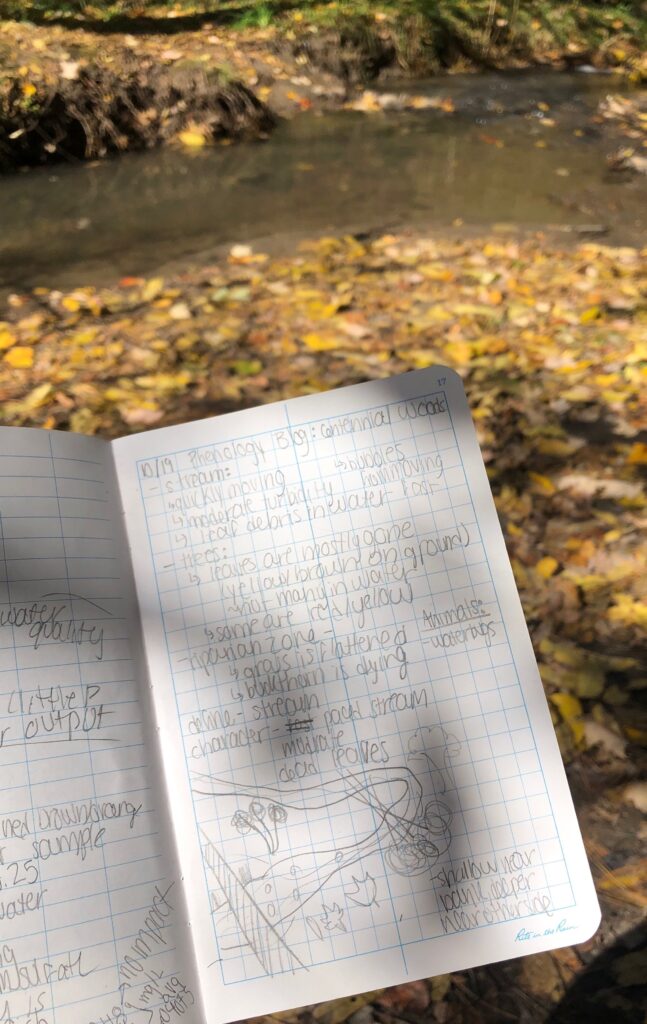
My Field Notes
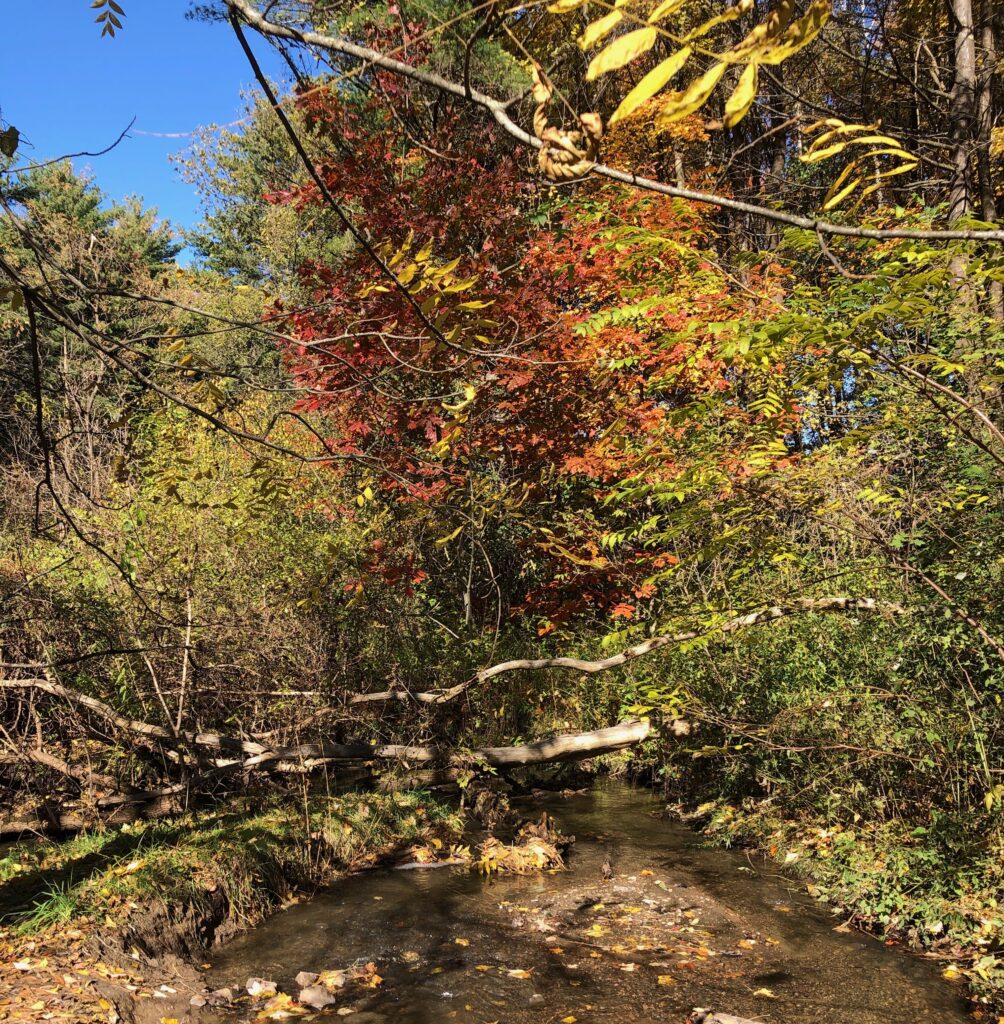
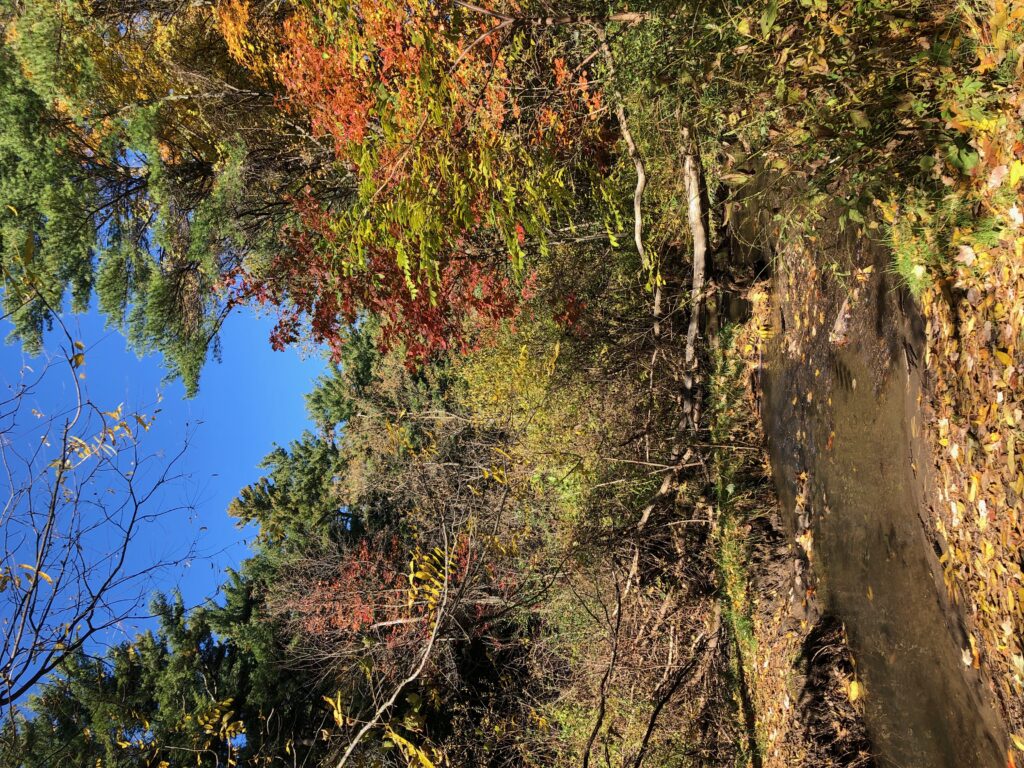
Defining Features 
